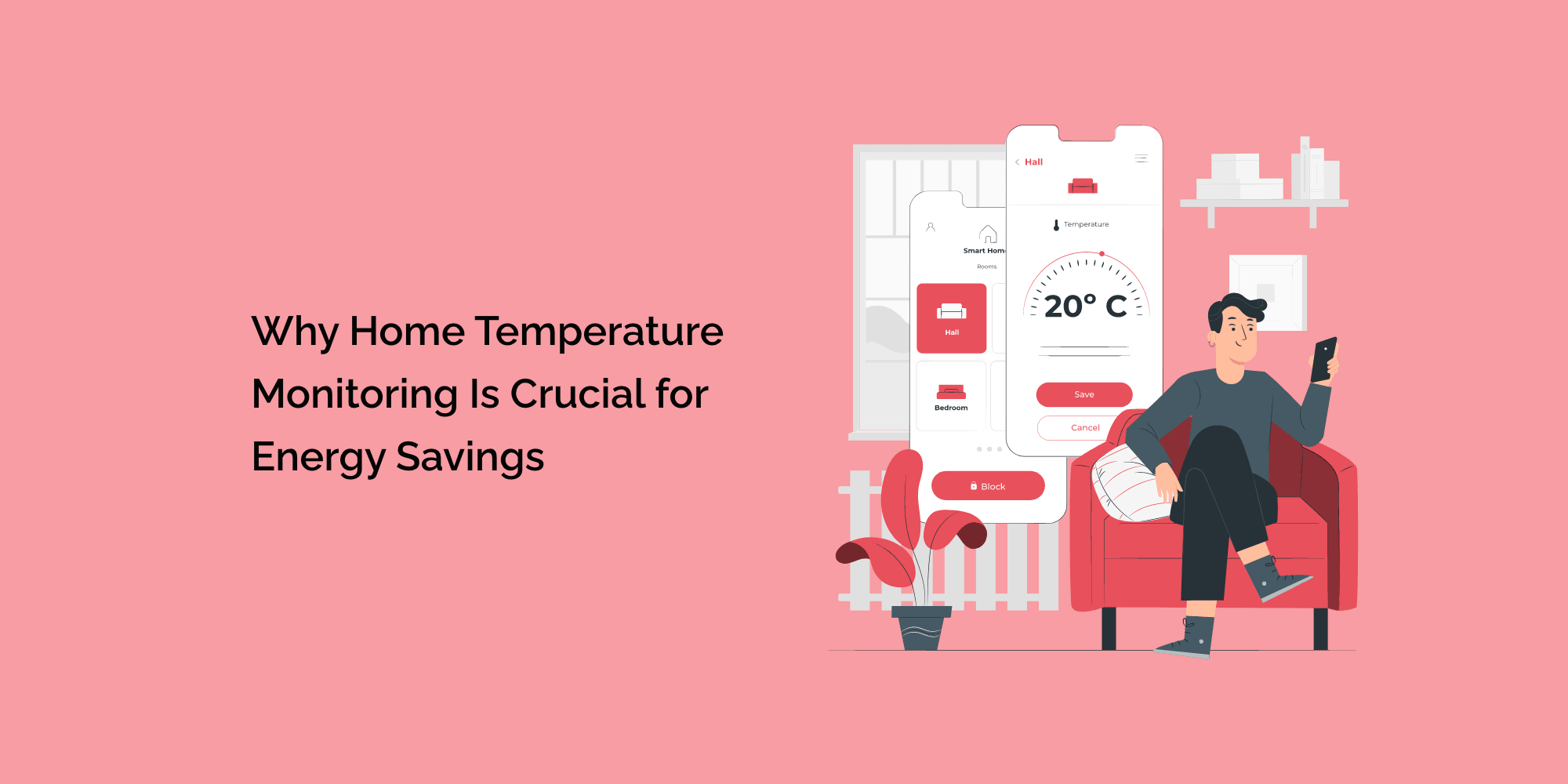As concerns about energy consumption and environmental impact continue to grow, homeowners are becoming more conscious of their energy usage. One essential aspect of energy efficiency that often goes overlooked is home temperature monitoring. Keeping a close eye on indoor temperature and understanding its relationship with energy consumption is crucial for optimizing energy savings.
In this detailed blog, we will explore why home temperature monitoring is essential for energy efficiency, the impact of temperature on energy usage, and how adopting smart temperature monitoring practices can lead to significant cost savings and a greener, more sustainable lifestyle.
The Role of Home Temperature in Energy Consumption
Understanding the Link between Temperature and Energy Use
We'll begin by explaining the connection between indoor temperature and energy consumption. The blog will highlight how adjusting the thermostat even by a few degrees can lead to considerable energy savings. We'll explore the concept of heating degree days (HDD) and cooling degree days (CDD) and how they influence energy usage.
The Importance of Home Temperature Control
Maintaining a consistent and comfortable indoor temperature is crucial for both comfort and energy efficiency. We'll discuss how temperature fluctuations can lead to wasted energy and discomfort, emphasizing the need for effective temperature control measures.
The Impact of Heating and Cooling on Energy Bills
Understanding Heating Costs
Heating is one of the most significant energy expenses for homeowners, especially during colder months. We'll examine the factors that contribute to heating costs, including insulation, thermostat settings, and outdoor temperature, and how temperature monitoring can help reduce these expenses.
The Role of Cooling in Energy Consumption
During hot weather, cooling your home can also lead to high energy bills. We'll explore how smart temperature monitoring can help optimize cooling systems, reduce energy usage, and save money without sacrificing comfort.
Smart Temperature Monitoring for Energy Efficiency
The Advantages of Smart Thermostats
Smart thermostats offer a range of benefits for energy efficiency. We'll delve into their learning capabilities, remote control features, and ability to create personalized heating and cooling schedules. Additionally, we'll discuss how smart thermostats adapt to your lifestyle, saving energy when you're away and ensuring comfort when you return.
Remote Monitoring and Control
With smart temperature monitoring, you can control your home's temperature remotely using your smartphone or other connected devices. We'll explain how this feature enables you to make real-time adjustments, ensuring your heating and cooling systems are running efficiently even when you're not at home.
Zoning Systems for Targeted Energy Savings
Zoning systems divide your home into different areas or zones, allowing for individual temperature control. We'll discuss how zoning can lead to significant energy savings by heating or cooling only the occupied areas and not wasting energy in unoccupied spaces.
The Impact of Home Temperature Monitoring on Energy Savings
Case Studies and Real-Life Examples
To illustrate the impact of home temperature monitoring on energy savings, we'll present case studies and real-life examples. These success stories will demonstrate how homeowners have achieved substantial cost reductions by implementing smart temperature monitoring practices.
Data-Driven Insights
Using data analysis and insights from smart temperature monitoring devices, we'll explore how homeowners can make informed decisions to optimize energy consumption. This data-driven approach ensures you can identify patterns and trends, enabling further energy-saving strategies.
Creating an Energy-Efficient Home with Temperature Monitoring
Implementing Energy-Saving Practices
We'll provide practical tips for homeowners to implement energy-saving practices alongside temperature monitoring. From improving insulation to sealing drafts and using curtains effectively, these practices complement smart temperature monitoring efforts.
Environmental Benefits of Energy Savings
Beyond cost savings, we'll discuss the broader environmental benefits of reducing energy consumption. By minimizing your carbon footprint through energy-efficient practices, you contribute to a greener, more sustainable planet.
Long-Term Sustainability with Home Temperature Monitoring
Energy Efficiency as a Lifestyle Choice
We'll emphasize how energy efficiency is not just a short-term goal but a long-term lifestyle choice. Home temperature monitoring becomes a key component of sustainable living, ensuring continuous energy savings for years to come.
The Future of Energy Efficiency and Temperature Monitoring
As technology continues to advance, we'll explore the future possibilities of energy efficiency and temperature monitoring. From AI-driven predictive temperature adjustments to seamless integration with renewable energy sources, we'll glimpse into what lies ahead for smart home temperature control.
Conclusion
By understanding the link between temperature and energy consumption, embracing smart temperature monitoring practices, and implementing energy-saving measures, you can achieve significant cost savings and reduce your environmental impact.
With smart thermostats, remote monitoring, and data-driven insights, you gain better control over your home's temperature and energy usage. By making energy efficiency a lifestyle choice, you contribute to a greener, more sustainable future for yourself and the planet. Embrace the possibilities of home temperature monitoring, and embark on a journey toward a more energy-efficient and environmentally conscious way of living.








